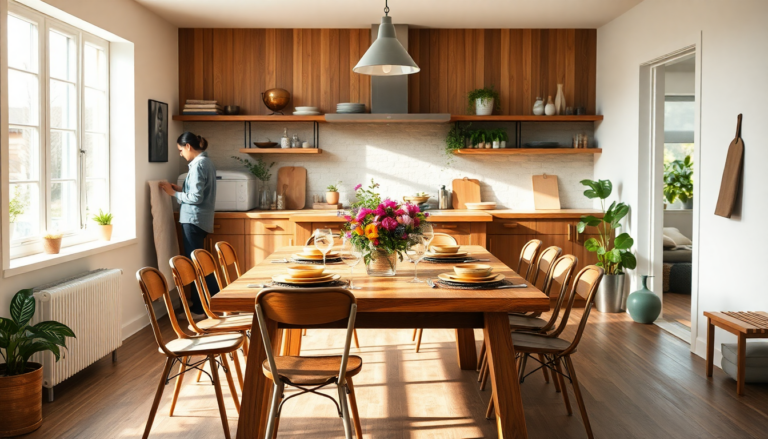Argomenti trattati
When it comes to home design, the magic often lies at the crossroads of personal connection and creativity. Take, for instance, a recent episode from a beloved design series that captured the heartwarming tale of a designer who transformed a simple family dinner into a stunning project for her parents. This story not only showcases the beauty of thoughtful design but also highlights the essential need to understand the unique desires of the people involved. Isn’t it fascinating how a meal can inspire such a change?
The Power of Personal Relationships in Design
Typically, when we think about home design, we picture color palettes, furniture layouts, and stylistic choices. However, the real essence of a space often comes from the stories that breathe life into it. In this case, the designer—who is quite the star in the industry—took a casual dinner at her parents’ home and turned it into a project that reflected their dreams and aspirations for their living environment. This approach underscores a major trend in modern marketing: aligning products and services with the emotional narratives that resonate with customers. How do we create spaces that genuinely reflect who we are?
Designing a home is much like crafting a marketing strategy; both require a deep understanding of the audience. The designer’s parents wanted a space that was not only functional but also a true reflection of their personal tastes. By tuning into their wishes—envisioning a retreat filled with classic design and timeless details—she was able to curate an environment that felt both familiar and refreshingly new. Isn’t that the goal of any good design?
From Concept to Reality: The Design Process
Picture this: the designer sketching her vision on a napkin at the dinner table. This moment illustrates a key principle that applies equally to both design and marketing: the ability to visualize a concept quickly and effectively. In the realm of digital marketing, this is akin to developing an initial campaign strategy grounded in consumer insights and data analysis. It’s about taking those abstract ideas and turning them into real, measurable results. How often do we overlook the importance of that first spark of creativity?
The overhaul of the back porch involved meticulous planning and execution. The designer cleverly incorporated tall windows to flood the space with natural light while preserving the home’s original brickwork, creating a beautiful balance between indoor and outdoor living. This aspect of her design mirrors the need for optimizing customer journeys in marketing—creating seamless experiences that draw users in and keep them engaged. Isn’t it all about making the user’s experience as smooth as possible?
Engaging the Audience: The Emotional Connection
What really captured the audience’s hearts wasn’t just the breathtaking visuals of the transformed space, but the emotional narrative that unfolded throughout the process. The designer shared her thoughts and experiences on social media, connecting with followers through genuine storytelling. In marketing, this approach is vital; data shows that consumers are increasingly attracted to brands that share authentic stories and build relationships. How can we utilize storytelling to deepen our connections with customers?
The enthusiastic reactions from fans of the show highlighted the power of combining aesthetic appeal with emotional resonance. Comments about the dramatic color palette and the inviting textures revealed how visual elements can stir strong feelings and foster connections. Today’s marketing landscape serves as a reminder that tapping into customer emotions can substantially enhance engagement and loyalty. Are we truly listening to what resonates with our audience?
Measuring Success: Key Takeaways
To fully grasp the impact of such a design project, we must consider how success is measured. In marketing, we often look at metrics like CTR (Click-Through Rate) and ROAS (Return on Ad Spend) to assess performance. Similarly, in the world of design, feedback from homeowners and viewers serves as invaluable data points. The joy and satisfaction expressed by the designer’s parents are essential KPIs in evaluating the effectiveness of any design initiative. How do we ensure we’re hitting those targets?
As we reflect on this touching story of transformation, it stands as a powerful testament to creativity, emotional connection, and the importance of truly understanding one’s audience. Whether in design or marketing, the ability to resonate with the individual needs and stories of people can lead to outcomes that are both beautiful and meaningful. Isn’t that what makes a project truly special?

